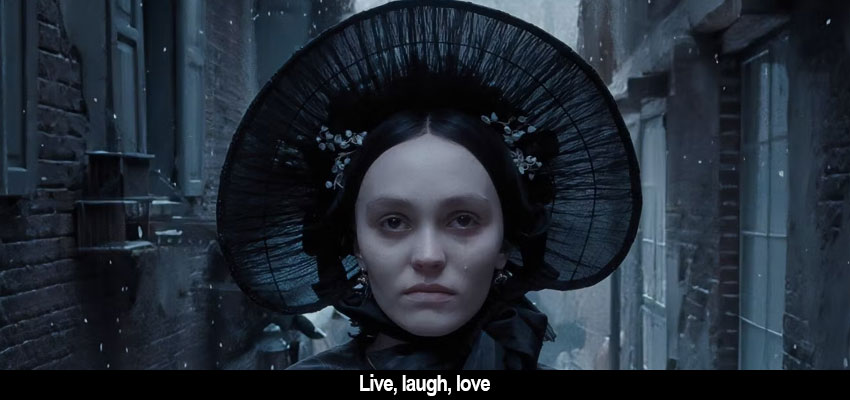Nosferatu: A Haunting Exploration of Female Desire and Repression
In Robert Eggers’ striking adaptation of Nosferatu, we are drawn into a gothic narrative that deftly interweaves themes of female desire, repression, and the haunting power of the supernatural. This film invites audiences to explore the depths of human emotions set against a backdrop of eerie landscapes and tortured souls.
The Story So Far
Set in a time when societal norms tightly bound women, Nosferatu introduces us to Ellen Hutter (Lily-Rose Depp), a young woman grappling with her burgeoning desires and the shadows of her past. As her fiancé Thomas (Nicholas Hoult) embarks on a journey to Transylvania for his career, Ellen finds herself increasingly tormented by dark forces, represented by the enigmatic Count Orlok (Bill Skarsgård). This tale unfolds as a delicate balance of love, fear, and the struggle for autonomy, culminating in a confrontation with the primal aspects of desire.
A Deep Dive into the Review
Storyline and Themes
Eggers’ Nosferatu is not just a horror film but a profound exploration of female hysteria and repression. The narrative cleverly aligns the supernatural with the psychological, portraying the vampire as a metaphor for the uncontrollable appetites of women in a patriarchal society. Ellen’s journey from innocence to awakening unfolds with a haunting intimacy, inviting viewers to reflect on the societal constraints that shape women’s identities.
Performances
The cast delivers a captivating array of performances that breathe life into this gothic tale. Lily-Rose Depp shines as Ellen, embodying vulnerability and strength as she navigates her desires. Nicholas Hoult’s portrayal of Thomas adds depth, showcasing a man caught between ambition and the emotional turmoil of his fiancée. Bill Skarsgård, as Count Orlok, presents a chilling yet strangely poignant figure, drawing the audience into his world with magnetic intensity. Ralph Ineson’s role as the doctor further emphasizes the tension between societal expectations and individual desires.
Direction and Cinematic Style
Robert Eggers masterfully crafts a visually stunning landscape that pays homage to the Expressionist roots of the original Nosferatu. The film’s aesthetic is marked by sharp contrasts of light and darkness, with chiaroscuro lighting that enhances the haunting atmosphere. Eggers’ attention to detail creates a palpable sense of dread, immersing viewers in a world where desire and horror coexist. The cinematography captures both the beauty and the terror of the narrative, making every frame a work of art.
Symbolism and Interpretation
At its core, Nosferatu symbolizes the struggle between societal norms and the primal instincts that govern human behavior. The film delves into the concept of the ‘female gaze,’ offering a fresh perspective on desire and repression. Ellen’s interactions with Count Orlok serve as a metaphorical battleground where her yearning for autonomy clashes with the expectations imposed upon her. The film cleverly critiques the notion of female hysteria, showcasing how societal pressures can manifest in supernatural ways.
Conclusion
Robert Eggers’ Nosferatu is a haunting exploration of the complexities of female desire, repression, and the supernatural. Through its captivating performances, stunning visuals, and profound themes, the film invites audiences to reflect on the dark corners of the human psyche. As we navigate a world rife with societal constraints, Nosferatu serves as a reminder of the power of desire and the importance of reclaiming one’s narrative in the face of repression.
Frequently Asked Questions
1. What is the main theme of Nosferatu?
The main theme of Nosferatu revolves around female desire and repression, exploring how societal norms shape women’s identities.
2. Who stars in Nosferatu?
Nosferatu stars Bill Skarsgård, Lily-Rose Depp, Nicholas Hoult, and Willem Dafoe.
3. Is Nosferatu a remake of the original film?
Yes, Nosferatu is a modern adaptation of F.W. Murnau’s 1922 silent film of the same name.
4. What is the significance of the vampire in the film?
The vampire symbolizes the uncontrollable appetites of women and critiques the societal repression of female sexuality.
5. How does the film portray the concept of female hysteria?
The film critiques the notion of female hysteria by illustrating how societal pressures manifest in supernatural ways, particularly through Ellen’s character.
6. What are the visual styles used in Nosferatu?
Eggers employs chiaroscuro lighting and Expressionist aesthetics to create a haunting atmosphere that enhances the narrative.
7. How does the film address the male perspective?
The film explores male hypocrisy and the emotional turmoil experienced by men when faced with women’s desires and mental health struggles.
8. What impact does Nosferatu have on contemporary horror?
Nosferatu revitalizes gothic horror by infusing it with modern themes of female empowerment and the exploration of societal constraints.
9. Can Nosferatu be viewed as a feminist film?
Yes, it can be viewed as a feminist film as it highlights the struggles of women against patriarchal norms and reclaims the narrative of female desire.
10. Where can I watch Nosferatu?
Nosferatu is available for streaming on platforms such as Netflix and Prime Video.
Tags: Nosferatu, Robert Eggers, vampire films, female desire, gothic horror, film review, Bill Skarsgård, Lily-Rose Depp, Nicholas Hoult

